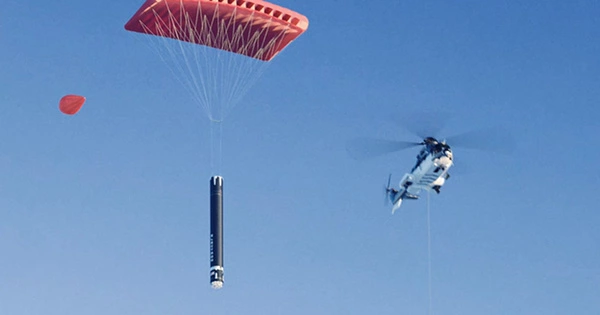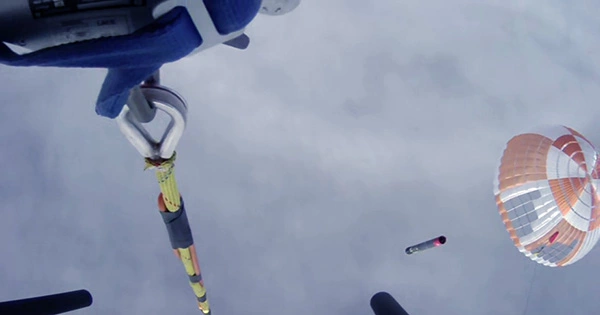Rocket Lab, a small satellite launch expert, has announced intentions to use a helicopter to intercept one of its launch vehicles on its way back to Earth. In the next two weeks, we’ll find out if the idea is as crazy as it seems, or if Rocket Lab has devised a new technique to recycle launch vehicles. The methods used to get humanity into space and to the Moon for the first time were not sustainable. Apart from the huge amounts of fuel consumed, dropping massive chunks of metal used to launch spacecraft into the water for the first leg of their voyage was impossible.
The difficulty has sparked a variety of approaches to rocket recapture, with SpaceX’s eventually successful process of landing its first stage on barges and launchpads being the only one that has shown to be suitable for reuse thus far. Initially, the procedure will be similar to those of other space launches. On a two-stage Electron rocket, Rocket Lab will launch 34 cubesats (tiny satellites) for a range of clients. The first stage will separate 2.5 minutes after launch and then begin to fall back at an anticipated speed of 8,300km/h (5,150 mph) due to gravity. The first booster will deploy a parachute at a height of roughly 13 kilometers (8.3 miles), reducing its speed to an estimated 36 kilometers per hour (22 mph).

This may appear to be plenty for a soft landing with only a few dings and dents, but people have an odd aversion to a metal object the size of three elephants approaching them at the speed of an Olympic sprinter. As a result, Rocket Lab will have a helicopter waiting to try to hook the parachute and bring the rocket to a complete halt without destroying the parachute. In a statement, Rocket Lab CEO Peter Beck said, “Trying to grab a rocket as it comes back to Earth is no simple job, we’re absolutely threading the needle here.” The test, on the other hand, does not appear out of nowhere. Additionally, Beck stated: “During our 16th, 20th, and 22nd flights, we conducted many successful helicopter catches with replica stages, did extensive parachute testing, and successfully retrieved Electron’s first stage from the water.”
If you’re having trouble seeing how a helicopter could catch a first-stage rocket, consider that Rocket Lab’s Electron is less than a third the height and weight of SpaceX’s Falcon 9. It should be well within the carrying capacity of the Sikorsky S-92 that will undertake the mission, weighing 13 tonnes at launch (lighter after utilizing its propellant). The launch will take place from Rocket Lab’s launch facility on New Zealand’s Mahia Peninsula, with the attempted recapture taking place further offshore. On April 22, the launch window will open. Despite the fact that Rocket Lab is now based in the United States, the “There and Back Again” mission underlined the company’s New Zealand roots with a Tolkien connection.
Rocket Lab may not be as well-known as the organizations that have sent humans into space, but they can brag of launching over 1,700 tiny satellites, including 112 in prior Electron flights. Low Earth Orbit has its own issues with sustainability, but this mission may be able to assist there as well. Three cubesats from E-Space, a startup working on plans to trap debris in orbit before sacrificially burning up in the atmosphere, are among the cubesats to be launched. Another company, Aurora Propulsion Technologies, will test “Resistojets” and “Plasma Brakes,” which are designed to keep satellites from spiraling out of control and to ensure that they deorbit safely when needed.















